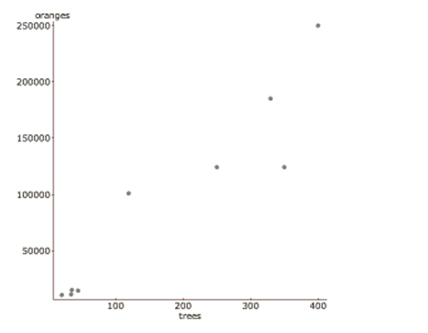A study examined the number of trees in a variety of orange groves and the corresponding number of oranges that each grove produces in a given harvest year. Linear regression was calculated and the results are below.
linear regression results: Dependent
Variable: oranges
Independent Variable: trees
Sample size: 9
R-sq = 0.886 s = 31394.7

-If these data were collected in California, would you feel confident in using this equation to make predictions about Florida orange groves also? Explain.
Definitions:
Electronic Brainstorming
A facilitated brainstorming process conducted over electronic platforms to generate ideas from participants in different locations.
Evaluation Apprehension
The fear of being judged by others, which can influence behavior and performance in social and evaluative situations.
Production Blocking
A phenomenon where an individual's contribution or productivity is impeded or halted by the pacing and processes of a group activity.
Informal Groups
Informal groups are naturally occurring social networks within an organization, formed by employees based on common interests, friendships, or social affiliations, and not officially designated by the organization.
Q7: Connie doesn't take class notes as well
Q8: Analogy and Legal Reasoning<br>Rachel Paulson, an elderly
Q13: A cure that supposedly arises from a
Q17: Soda cans A machine that fills cans
Q30: How well a hypothesis fits the facts
Q33: Based on data from two very large
Q37: What is the probability that exactly 3
Q50: Susan's mother is Chris Campbell.<br>A) (∃x)(Mxs •
Q63: A college alumni fund appeals for
Q72: Five juniors and four seniors have applied